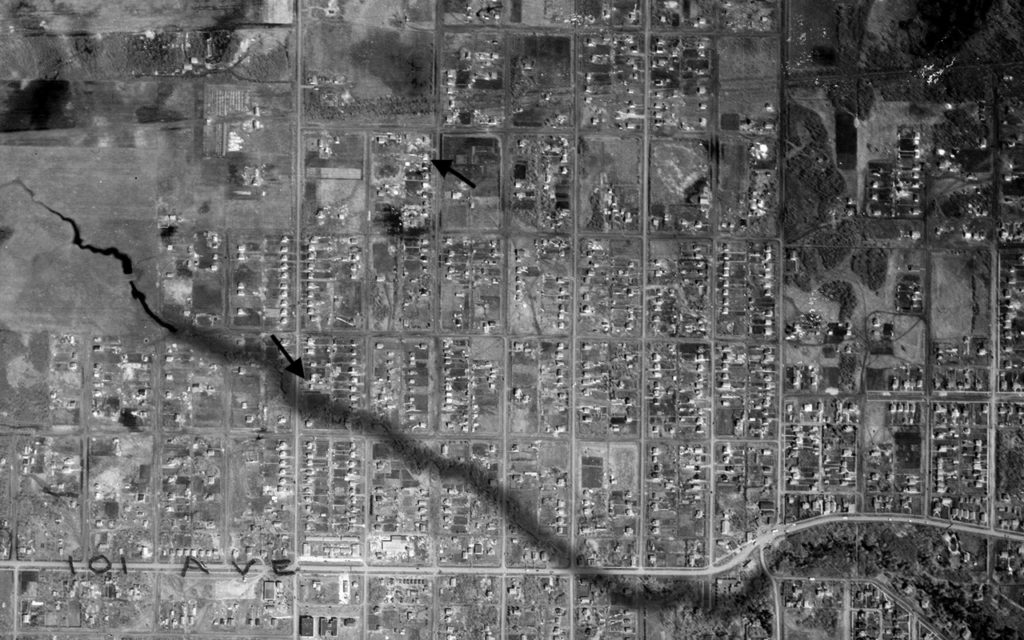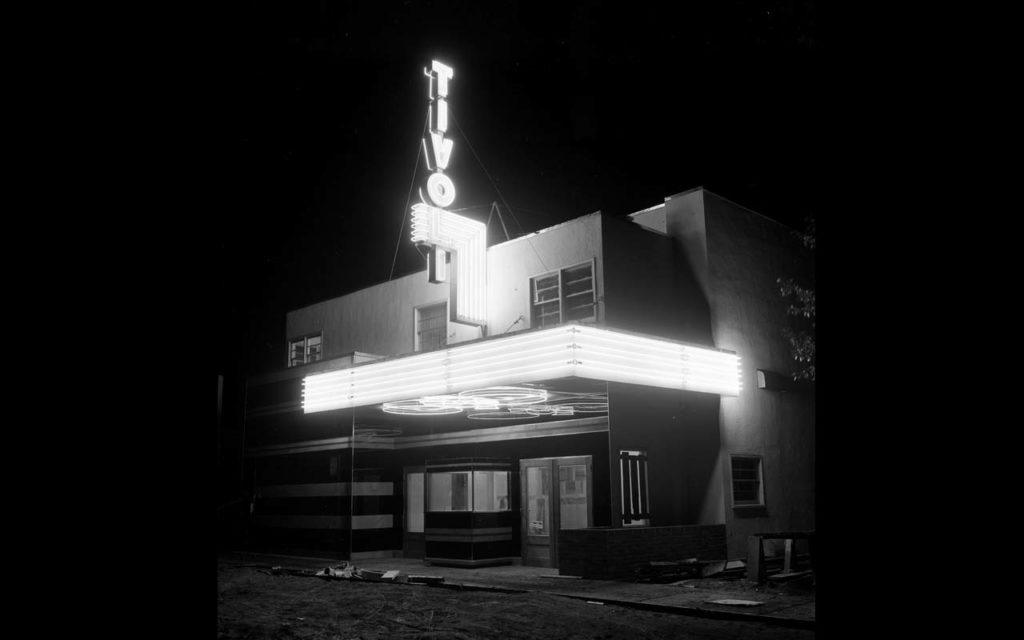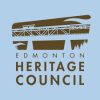Barrie Touchings was two years old when his parents bought a house at 10450 154th Street. His paternal grandmother had come from England and grandfather from Newfoundland; his mother’s parents were both from the United States, and she was born there. The grandparents were settlers in Camrose, Thorhild and Wetaskiwin. Touchings’ parents met in Thorhild, and married in 1944. His mother worked at Canada Packers until the soldiers came home, and his father alternated between seasonal farming, a very brief stint at coal mining, and work at a sawmill in the coal patch.
In 1949, they bought a 600 to 700 sq. ft. house in Jasper Place. In video clip #1, Touchings describes the house, its dugout basement and water barrels, the lot they lived on with its big garden, the streets and ditches in the Town of Jasper Place in the ’50s, and how his father came upon a beaver dam in MacKinnon Ravine around 155th Street in 1949.

There was no running water in the house until 1957, when the Town of Jasper Place began installing a water and sewer system in their neighbourhood. In video clip #2, Touchings recounts how his father, who worked full-time as a carpenter with the City of Edmonton School Board, dug out their basement in readiness for the water and sewer infrastructure that was to be installed. He also describes how an extra bedroom was later added to the house.

In video clip #3, Barrie Touchings describes the housing stock in the Canora neighbourhood and when it was developed. He also talks about where his family would go for groceries in the ’50s, including a corner shop owned by a Chinese family.
This was an era when neighbourhood children played outdoors all over the neighbourhood — in their yards, in the roads, in schoolyards. In winter, they got cardboard from the grocery stores and went sledding in MacKinnon Ravine or skating in local rinks. Touchings and others remember these times in Memories of Jasper Place: Community Members Reminisce. He also tells the story of how he got a bike and where he went with it in Getting Around in Jasper Place: Part One. Saturday matinees at the Tivoli and the Jasper Cinema were also popular:
We would try to go to the Saturday matinees at either the Jasper Cinema or the Tivoli Cinema. One was on 156th Street, the west side of the street north of Stony Plain Road – that was the Jasper Place theatre. The Tivoli Theatre was on 149th Street, west side of the road north of Stony Plain Road, roughly where Apache Seeds is today. If we could get a quarter, we could go to the movie theatre and we could get a popcorn and a pop. [….] Another thing that happened is people would come through with movies, theatre movies. This was before I had any recollection of a movie theatre like the Tivoli Theatre or the Jasper Theatre. They would play these movies, for example, in the basement of Canora School. People in the community would come and they’d pay their 5 cents, or whatever it was, and watch this movie. I have a friend who, later when he was 12 or 15 years old, had a little business going around playing movies in Jasper Place.

Like other children in the Town of Jasper Place in that period, Barrie Touchings attended a number of schools throughout the Town: Canora for Grades 1 to 6, then again 8; Brightview for Grade 7, Lynnwood for Grade 9, and he was part of the first cohort to attend and graduate from the Jasper Place Composite High School alongside his friend, Ken (Bud) Newman. In the transcript, Touchings talks about the size of the classes: “30 to 38 students in a class, a fairly mixed bag of students,” and elaborates on that mix. He also mentions high school dances and the groups that played at them four or five times a year:
We always had music classes. In high school we’d have high school dances, and we’d tend to get what became big name bands: The Rebels, Nomads, Privilege; Barry Allen, I remember, was one of the artists that came to play. One of my high school classmates was a guy by the name of Al Water, and he played in a number of the big bands. He started in high school playing sax. He played with all of them. The Indigenous students formed a rock and roll band called the Chieftones. They met with considerable amount of success. I think they cut a CD. They went to Vegas a number of times and performed in Las Vegas.
In video clip #4, Touchings first speaks about how the children in Canora stayed in their own neighbourhood, apart from inter-school sports activities. He goes on to explain that, while the Town of Jasper Place, “had a reputation of being perhaps inferior,” the Canora neighbourhood was reputed to be “the roughest part of Jasper Place.”
During the interview, Barrie Touchings also tells stories about their outhouse being tipped over; working alongside his father from the age of 5 and his other jobs, including at Corner Pharmacy, when he was young; how he was taught financial responsibility at an early age; surviving a very cold day in 1966 or ’67; sometimes using the Diamond Bus Lines to go into Edmonton, and how he enjoyed using the buses for bumper riding; and how people received health care in those days.
He describes the demographics of the neighbourhood in the ’50s and ’60s — a majority being of European descent including a few Ukrainian families — a few Indigenous families, one Japanese family, and one Black family. He mentions that most of his neighbours were employed as tradespeople: “carpenters, plumbers, electricians, general labourers,” though there were also a few teachers and medical professionals who lived in the community; he talks about the number of women working outside of the home. He then recounts his own career path with a focus on Law, eventually becoming an instructor in Law at the University of Alberta for the Faculty of Engineering.


